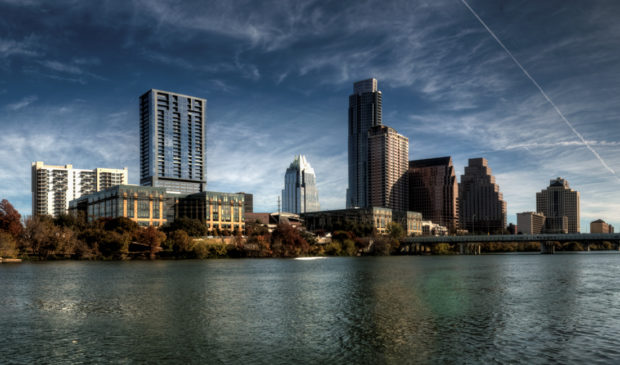Chamber conference tackles pains (and gains) of Austin businesses
Friday, April 20, 2018 by
Chad Swiatecki Business owners and leaders gathered Thursday for the Austin Chamber of Commerce’s State of Talent conference sounded a common refrain: Life in a bustling and fast-growing population center doesn’t guarantee easy days of cash registers that ring by themselves.
Rather, compounding issues of growing labor costs, competition for workers, and transportation and affordability issues making it hard for middle-class employees to live in Austin are creating a unique challenge for business owners of all sizes.
Over the course of three panel discussions and a pair of keynote presentations, attendees heard many of the statistics that have become something of a drumbeat in local business circles in recent years: 3 percent unemployment, a population that will double by 2040, 40,000 jobs available, recent per-capita income growth of 4 percent.
But a tight labor market and Austin’s permitting and building process, which is seen as costly and time-consuming, are making it hard for locally grown businesses to survive and thrive even with an abundance of potential customers.
“I fear that since Austin tops the lists of all these ‘best places to live’ lists – and that’s great – but as more people discover Austin, is that going to turn us into San Francisco, and if you want to buy a house it’s $800 to $1,000 a square foot?” asked Mason Ayer, CEO of Kerbey Lane Cafe, during a panel on the local challenges facing small businesses.
Other panels dealt with how Austin can attract top-level executives to the area and how businesses can best take part in the area’s new workforce plan, which is intended to grow job applicants in the health care, information technology and advanced manufacturing fields.
Other panelists shared stories of how they’ve started to distance their businesses from the city of Austin. Salina Vela, a practice administrator for Tru-Skin Dermatology, said her company only has one office in Austin and is focusing its growth in northern suburban communities because of the cost of Austin real estate and expected difficulties with opening new locations there.
“We’ve opened new offices outside of Austin, with a new one in Cedar Park, and we have no plans to open one in Austin,” she said. “As far as reaching a tipping point, I feel that it is happening already.”
Nolan Gore, general manager of Top Choice Lawn Care, said he’s seen his business growing most outside of Austin because new home and other construction in master-planned communities – the types of properties that most need lawn care services – is easier and cheaper to complete outside the city limits.
There was also plenty of criticism for the city’s handling of a new ordinance mandating paid sick leave for employees of small businesses. Ayer and Gore said they weren’t opposed to the concept of offering sick time to their employees, but said the city rushed the process and approved language that they called ambiguous and likely to cause legal challenges for the city soon.
“The input process was very one-sided,” Ayer said. “From a legislative perspective, it was a very poorly crafted ordinance with a tremendous amount of ambiguity and a lot of areas that were left unclear. As we went through this process, it turned into this very politicized issue where if you were opposed to the ordinance as it was drafted, you were against paid sick leave.”
During an address to roughly 200 attendees of the conference, Will Coombes, head of experience design for Visa in Austin, confronted the mix of dread and anticipation he said many residents are feeling over the possibility of Amazon picking Austin as the site for its $5 billion new second headquarters campus.
Coombes said the 50,000 jobs expected to come from Amazon over a 17-year period would only represent a 10 percent increase to Austin’s annual job creation pace. But he cast doubt on the ability of local leaders to sufficiently plan for that and most other growth headed this way, both in terms of job training as well as general infrastructure.
“If elected officials over the last two decades haven’t been able to adequately plan for infrastructure and housing, what will we do about that kind of growth?” he said. “ Our region must prepare many, many, many more credentialed and college graduates than we do today.”
Photo by Randall Chancellor from Austin, TX – Austin Skyline – Morning Sun, [CC BY-SA 2.0] via Wikimedia Commons.
The Austin Monitor’s work is made possible by donations from the community. Though our reporting covers donors from time to time, we are careful to keep business and editorial efforts separate while maintaining transparency. A complete list of donors is available here, and our code of ethics is explained here.
You're a community leader
And we’re honored you look to us for serious, in-depth news. You know a strong community needs local and dedicated watchdog reporting. We’re here for you and that won’t change. Now will you take the powerful next step and support our nonprofit news organization?









